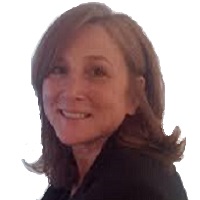 By Sarianne Gruber
By Sarianne Gruber
Twitter: @subtleimpact
Not too often do you get the chance to hear a Cable guy and IT guy exchange notes on interoperability. At the Inform[ED] Connect Health symposium, the host CableLabs, a non-profit innovation center and R&D lab, brought together policy makers, information technology leaders along with cable innovators and wireless technologists to discuss new advances on achieving data liquidity. Healthcare IT encounters interoperability challenges on a daily basis for patients and providers. Harm occurs when systems cannot “talk” to each other leading to serious risk for patient safety and care quality, other concerns include provider burnout and increased operational and cost burdens for healthcare organizations. Innovators are taking a serious look at the latest in telecommunication wireless solutions, as the cable industry is taking the lead in showcasing healthcare’s connectivity needs. Ed Miller, CTO of the Center for Medical Interoperability, moderated the session between two subject leaders on how healthcare could leverage expertise in interoperability from the cable industry.
Healthcare’s Heavy Investment in Digitization
Manish Shah’s view of healthcare care starts with information systems and advanced technology. As the SVP & CIO of Community Health Systems, IT is the linchpin for integrating clinical, financial and administrative operations. From his perspective, the Accountable Care Act, unfortunately, focused on digitizing the medical record and in the process made the problem worse for “downtown digitalization” – the “thing” that touches the patients. “The whole trick of the digitization footprint was to provide better patient care by the total ecosystem that works together in a seamless way. Interoperability becomes an absolute essential to how you harness information — the data liquidity that allows critical decision making with appropriate data at the right point of the care setting, in an expeditious, reliable and safe way. And it is a significant challenge,” stated Shah.
Cable Takes On Interoperability: An Innovative Perspective
The Cable industry is coming from a different point of view – one of an innovation perspective. Mark Francisco, an engineering Fellow from Comcast Innovation Labs, specializes in service platforms that frees content from physical constraints for digital home products. “We start our interoperability point from where we began, whether it be someone in the medical profession, a caregiver or patient. We move our way through the electronic and mechanical system that gets the data, the prognosis, the care needs, and all the way back to the health care professionals. And insure all the policies that are within the practices of the healthcare industry,” relayed Francisco.
Let’s Talk About the Technical Side of Care Delivery
An IT viewpoint from Shah: Imagine a world where every single vendor sells devices each with a proprietary way of plugging in and sharing information. Then imagine every time you want to connect one of those devices there’s a toll. And for every single device, the manufacturer charges you for a proprietary interface for point to point data sharing. Imagine a world where there are hundreds and thousands of devices. When you pay for one. You get only one. And there is the challenge of getting safety, reliability, and economies of scale. There needs to be a balance and structure, which cable has figured out a long time ago, especially the seamlessness of the experience. There was a time when cable actually delivered a set of cable channels. Today those same wires carry on demand content, very high content, and it carries data. As consumers, we do not see a significant difference in the way TVs is plugged in homes today. If same simplicity was applied to healthcare devices it would actually change the dynamics, the economics and the cycle time of delivering patient care in a dramatic way.
A Cable view from Francisco: The idea of having the constraints of the existing system and trying to interoperate with them, it’s not something that unfamiliar for an IT industry to deal with. There are rules like HIPAA and all those other things that provide additional guard rails, and I look at those as a set of secure requirements. The best approach is from a traditional product delivery, one that is high value, high expected service quality. Go about it a similar fashion as government paths, which is looking at the interfaces. Look for the places to start to apply standards to interfaces, and work from the person back out to the clinical doctors. Work with PHI standards and all the way up to semantic standards, and along with good security standards. The last piece is how to apply DevOps models of operations, which is constantly looking at not backing into things with security, backing into things like patches. Operations and development are tied to a constantly flowing cycle. So even things like security or probability are constantly evolving in the process, which means you patch before a vulnerability is ever exposed or increase the unleveled services that devices come on. It would be a far stretch for the Cable industry to develop medical devices. Though, it is not a far stretch for the Cable Industry to be interoperable, which is to provide the conduit of choice to data from the patient or the caregiver to those who need the data to evaluate and act upon the data.
The Center for Medical Interoperability a nonprofit organization focused on accelerating the seamless exchange of health information, was founded by the Gary and Mary West Foundation and the Gary and Mary West Health Institute in 2013.
CableLabs is a non-profit Innovation and R&D lab founded in 1988 by members of the cable television industry. They develop technologies and specifications for the service delivery of high-speed data, videos, voice and next-generation services.
Learn more about the Informed[ED] Connected Health conferences.
